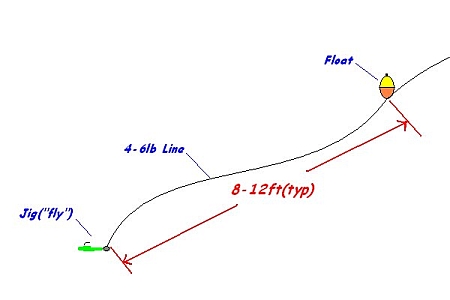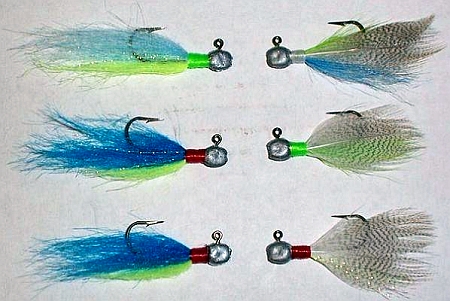There is a proven method that can produce some excellent winter action, It’s called the Float n’ fly(FNF) technique. What it entails is fishing a small “doll-fly” like jig under a fixed bobber on typically steep sloping banks, in hopes to target suspending smallmouth bass during cold water conditions. If any of you fish for bass during the winter, specifically smallmouth, you know it can be tough times.
They tend to suspend on steeper sloping banks, and along bluff walls, so these are the type of banks you want to target. You can also watch for any signs of baitfish as well, whether it be on your depth-finder or simply looking for swarming gulls which will usually mean the baitfish aren’t far away. In this scenario, you can bet the bigger fish aren’t going to be very far away either. The ideal water temperature is between 42-48 degrees, but the FNF bite can start sooner up into the lower 50’s as well. During these cold water conditions a smallmouths metabolism slows way down, and a lot of times they will suspend in the water column anywhere from 8-16ft typically. When you fish the small jig under the bobber, you are basically trying to place the jig right in front of the fishes face. That little dancing jig directly in front of the fishes face is gonna be dang near irresistible to that smallmouth bass. Also remember, the nastier the weather, typically the better the fishing. Sunny days just don’t seem to produce as well as overcast or even rainy or snowy days.
You may be wondering, Why such a long limber rod? Well, once you get out and try it, you’ll understand why the long rod can really help. Those small jigs aren’t really heavy enough to use a slip-bobber effectively, therefore a fixed bobber is preferred. And when your trying to cast out those 8-12ft leaders that long rod really helps out. The casting technique is a lot like when you watch fly fisherman casting.
Start with a backcast, then as soon as your jig hits the water, start with your forward cast and follow-through until the bobber hits the water. Letting your jig hit the water on your backcast gives the line just enough tension to “load” the rod allowing you to cast further and easier. You can find these specific FNF rods for a fairly decent price($30-40 typically). A decent medium sized reel with a good drag is also preferred. You want to have a good drag, and have it set loose enough so you can “play” the fish without it breaking that 4-6lb line, while still keeping enough tension to be able to eventually get the fish the to boat.
Here is a simple picture of how I rig mine up…

The FNF rig consists of a 1/16oz jighead, typically dressed in either craft-hair or duck feathers and a 7/8″ pear float attached anywhere from 8-12ft above the jig. Be sure to wrap the line around the bobber “hook” 2-3 times as the bobber can tend to slide on the line. Some people prefer to use a slightly different rig which involves a 3-way swivel, but I find simply wrapping the line around a bobber makes for easier depth adjustments. The depth that you set your bobber will depend on your specific conditions. If its a sunny day, the fish may tend to be a little deeper, or if its an overcast day they may tend to be more shallow. I believe the depth of the fish can also depend on the clarity of the water you are fishing. If you are fishing in a really clear lake, they may tend to be a little deeper than they would at the muddy lake down the road from you.
Here is a pic of a few FNF Jigs I’ve tied up…

So this is my take on it, I don’t claim to be any kind of expert at this technique. I hope this info may help some of you that are interested in giving this fun technique a try. If nothing else, this should help you at least get started with it. Nothing is worse than sitting at home all winter when there are still plenty of fish to be caught.
Leave a Reply
You must be logged in to post a comment.